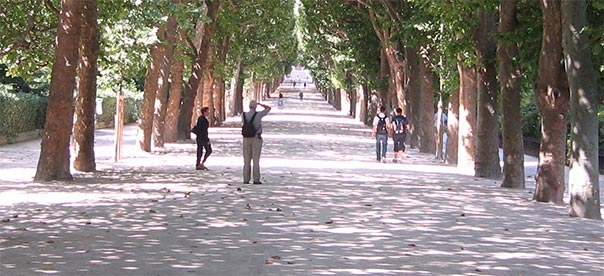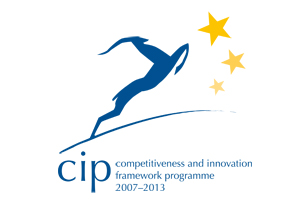 30 years of ecolabelling (Hamele, 2017)
30 years of ecolabelling (Hamele, 2017)
30 years of environmental and sustainable tourism certification programs worldwide
by Herbert Hamele, ECOTRANS (2017)
Prehistory
The rapid development of tourism after the 2nd World War is accompanied by the German criticism of the 50s to 90s of the last century to the negative social, environmental and economic consequences in the visited destinations: from Hans Magnus Enzensberger’s " The Tourist destroys what he seeks, by finding it" (50ies and 60ies) on “the landscape guzzlers" (70ies) by Jost Krippendorf and Robert Jungk's "Soft Tourism" to the issues of the “Gruppe Neues Reisen” (group new travelling, 70ies and 80ies) to the guiding principles of the working group "Tourism with insight and understanding" (80ies and early 90ies). Based on guidelines and recommendations for more environmentally friendly tourism 30 years ago the "Blue Flag" for beaches in Europe and the "Silberdistel" for tourism businesses in the Kleinwalsertal/ Austria developed and started the era of voluntary sustainable tourism certification. Today the Blue Flag is offered worldwide for beaches and marinas, instead of the local "Silberdistel" the tourism businesses in the Kleinwalsertal can choose between several national and international certificates for environmentally friendly or – in its broader sense - sustainable tourism.
Since 1994 ECOTRANS, the European Network for Sustainable Tourism Development, has periodically published and updated the growing list of certificates and labels for environmentally friendly and sustainable tourism with the aim to provide transparency in this area. In 2000 around 60 such certificates were operating mainly in Europe, in 2015 about 150 international and national labels are offered worldwide.
30 years of developments and experiences
Looking back on these 30 years of voluntary certification following developments and experiences can be determined:
- Role of certification systems: instrument for the tourist market to voluntarily move towards sustainability. This only works if the "better choice" is more preferred, and thus enhances the competitiveness of certified tourism and amortized investment
- Number: since the first certificates 30 years ago to now more than 150 rose
- Geographic coverage: from German-speaking countries over Europe in all countries worldwide
- Size of territory of application: locally and regionally, nationally and internationally
- Target groups: from hotels and beaches all (major) tour operators and destinations of all kinds
- Sustainability goals: expansion of initial environmental goals to additional social, cultural and economic goals
- Transparency: most standards published
- Verification methods: most with independent on-site audits
- International recognition: 24 standards and three certification programmes are recognized by the GSTC
- Number of certified businesses: 30,000 - 40,000 worldwide, half of them in Europe
- market share: 1% worldwide, not sufficient to give a good choice to the consumer and to mainstream sustainable tourism (few national exceptions)
- size of certificates: from 30 - 8000 certified companies
- ownership: mixture of public, public - private, and purely private certification programs
- services to clients: auditing and certification, some also training and / or marketing
- Cost: from 0 to 10,000 Euro
- Financing: many cases of public funding for standard development and market launch, many having financial difficulties to survive, few are economically sustainable
- Awareness: only few are known to exist by 10% or more of their target groups
- Uptake by the market: since few years growing interest and use by tour operators, booking agencies, national tourism marketing organizations
- Effects: can be measured as E x N x Y. E = positive effect beyond legislation at a certified business, N = number of certified business, Y = number of years of operation
benefits for policy: certificates demonstrate the feasibility of voluntary measures, source of best practice examples, data bases for monitoring e.g. consumption, basis for acceptance of binding legislation for all
Reactions to the Label flood: Mohonk to GSTC
Today, more than 150 eco-labels and sustainability certification for tourism worldwide are awarded, most of them at the national level for hotels and restaurants, about 50% in Europe. The Labels focuess on environmental objectives continue to be the majority, but recent certificates and those in Latin America, Africa or Asia also include social, cultural and economic requirements in support of sustainable development. This is certainly a welcomed development but for more than a decade there is also increasing critisism: Which of these certificates are really good? How to distinguish them? And above all, how can they actually move the market?
In response to the increasing number of certificates and the associated risk of confusion and misdirection ( "greenwash") in 2000 some 35 organizations and experts met in Mohonk (USA) and agreed on a series of requirements on credible certificates (Mohonk Agreement, 2000). The VISIT initiative in Europe 2001 - 2004 together with 12 leading certification programs developed a common minimum standard and started corresponding marketing initiatives. With the "Environmental Initiatives of European tourism businesses" in 2007 first ever key figures of certified accommodation facilities in Europe have been published on their energy, water, waste consumption. At the global level as part of the so-called Marrakech process a "Task Force Sustainable Tourism" has developed a concept for establishing of a "Sustainable Tourism Stewardship Council". That “STSC” should consider the environmental and sustainability certification programs in tourism worldwide, recognise them according to a global baseline standard and thus ensure greater clarity and effectiveness ("mainstreaming sustainable tourism") - similar to the "Forest Stewardship Council" for wood products. In 2008 the group started to develop the "Global Sustainable Tourism Criteria" for hotels and travel companies, and formed altogether the "Sustainable Tourism Stewardship Council", renamed 2010 to "Global Sustainable Tourism Council" and registered in the US as an NGO. Based on the GSTC Guidelines for the assessment and recognition of sustainable tourism standards and certification programs today 24 standards and three certifications have been recognized by the GSTC (December, 2015). To hedge their own credibility GSTC in 2016 targets to become a full member of ISEAL and to fully comply with the globally recognized ISEAL principles for credibility.
Preliminary conclusion
Sustainable tourism certificates began in the late 80's I the last century in Denmark, Austria and Germany, expanded in the 90s all over Europe and in first non-European countries, and reaches today with over 150 international and other national and regional systems almost all countries in the world. With the GSTC an important tool was created for giving international guidance to all stakeholders and for the recognition of standards and certificates. Funding is still a main challenge to most programs. The demand for receiving international recognition is not high. Many certificates demonstrate which voluntary measures in the context of international competition can help to improve the environmental and socio-cultural situations (deliver best practice examples, contributions to national and international awards). However, the market share of sustainable tourism - measured by the number of certified companies and destinations – is not yet decisive ("chicken or the egg"). Nearly all certificates have financial problems. The new Sustainable Development Goals 2030 include both challenge as well chances for the further development of standards (GSTC and individual certification programs), amongst others with respect to the SDG 12 to ensure sustainable production and consumption patterns.
























































